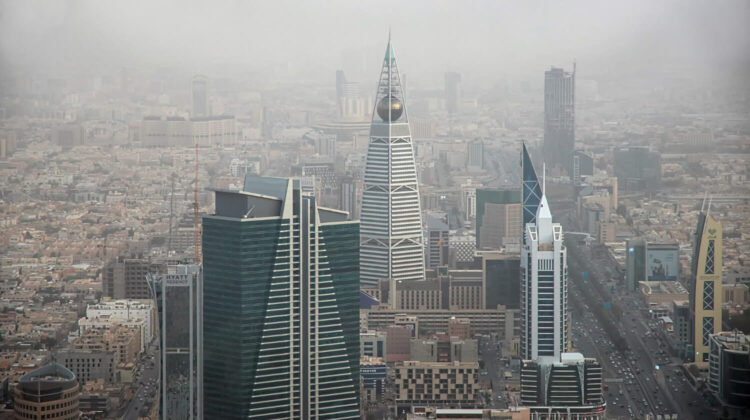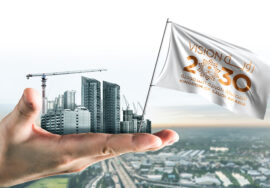
The Extent of Growth in the Construction Sector in the Kingdom of Saudi Arabia
The Kingdom of Saudi Arabia, with its rich history and modern ambitions, is experiencing a remarkable surge in its construction sector. As one of the largest economies in the Middle East, Saudi Arabia has embarked on a journey of transformation, diversification, and urbanization that has propelled its construction industry to new heights. In this article, we will explore the extent of growth in the construction sector within the Kingdom of Saudi Arabia, highlighting key drivers, recent developments, and the outlook for the future.
Historical Perspective
The construction sector in Saudi Arabia has long been a vital component of its economy, given the vast infrastructure needs of the nation. However, it is in recent years that this sector has witnessed exponential growth, thanks to the ambitious Vision 2030 program, which aims to diversify the Saudi economy, reduce its dependence on oil revenues, and transform the nation into a global economic powerhouse.
Key Drivers of Growth
- Vision 2030: Launched in 2016 by Crown Prince Mohammed bin Salman, Vision 2030 is the cornerstone of Saudi Arabia’s transformation. It outlines a comprehensive roadmap for economic, social, and cultural development, with significant emphasis on infrastructure development. This vision has been a catalyst for growth in the construction sector, with numerous projects planned and executed to achieve its objectives.
- Investment in Mega Projects: Saudi Arabia has undertaken several mega projects, such as NEOM, Qiddiya, and the Red Sea Development, each of which aims to create new cities and tourism destinations. These projects have attracted substantial investments from both the public and private sectors, driving significant construction activity.
- Housing Initiatives: The Kingdom is working to address its housing shortage by investing in residential developments. The Ministry of Housing’s initiatives and programs, including the Sakani program, have boosted the construction of affordable housing units.
- Infrastructure Development: Saudi Arabia has invested heavily in transportation infrastructure, including roads, railways, airports, and ports, to facilitate trade and movement across the country. The Riyadh Metro project, the expansion of King Abdulaziz International Airport, and the construction of the Red Sea Bridge are prime examples.
- Tourism and Entertainment: The development of the tourism and entertainment sectors has led to the construction of world-class resorts, theme parks, and cultural attractions, further fueling the growth of the construction industry.
Recent Developments
Recent years have seen a flurry of construction activities, highlighting the extent of growth in the sector:
- The Launch of NEOM: NEOM, a $500 billion futuristic megacity project, is one of the most ambitious projects globally. It aims to create a technology-driven, sustainable city that spans three countries and focuses on various sectors, including energy, biotechnology, and tourism.
- Qiddiya Entertainment City: Qiddiya, located just outside Riyadh, is set to become the largest entertainment city in the world. It will feature amusement parks, sports facilities, cultural venues, and a motorsport complex, transforming the region into a major entertainment hub.
- Red Sea Development: This $10 billion project aims to develop a pristine stretch of Saudi Arabia’s Red Sea coastline into a luxury tourism destination, complete with hotels, resorts, and ecological conservation efforts.
- Riyadh Metro: The Riyadh Metro, with a total length of 176 kilometers, is one of the largest urban rail transport projects globally. It will significantly improve transportation within the capital city.
Outlook for the Future
The future of the construction sector in Saudi Arabia appears robust, with numerous projects in the pipeline. Vision 2030’s continued implementation will be a significant driver of construction growth. Additionally, as Saudi Arabia diversifies its economy and embraces sustainability, construction projects are likely to focus on renewable energy, smart cities, and sustainable infrastructure.
Challenges such as labor shortages, cost fluctuations, and environmental concerns will need to be addressed. However, the Saudi government’s commitment to supporting the construction industry through policy reforms and incentives is expected to mitigate these challenges.
In conclusion, the Kingdom of Saudi Arabia is witnessing an unprecedented boom in its construction sector, driven by visionary leadership, ambitious projects, and a commitment to diversify its economy. As the sector continues to grow, it will not only reshape the nation’s landscape but also contribute significantly to the achievement of its Vision 2030 goals. The construction cranes on the Saudi skyline are not only building infrastructure; they are constructing a future of prosperity and innovation for the kingdom.


